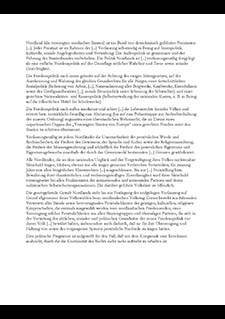Memorandum of 1943
In the summer of 1940, Metzger moved to Berlin and into the Piusstift in Wedding. He erroneously believed that he was safer from the Gestapo there, but they searched his residence in 1941.
In Berlin, Metzger gained entry to the circle around Hanna Solf (1887–1954), widow of the diplomat Wilhelm Solf (1862–1936). Opponents of the regime such as Albrecht Graf von Bernstorff (1890–1945), Otto Kiep (1886–1944) and Elisabeth von Thadden (1890–1944) were members of the discussion group.
They had contact to the Kreisau Circle through Helmuth James Graf von Moltke (1907–1945). Metzger’s job was to inform the circle about the Una Sancta, He was also included in their political deliberations.
A compatriot from Baden, former Center Party politician and adviser in the Foreign Office Richard Kuenzer (1875–1945) and he quickly agreed on the pessimistic interpretation of the military situation. This induced Metzger to contemplate further options for Germany to govern itself in the case of a defeat and to avoid occupying powers.
At a subsequent gathering at Kuenzer’s, Metzger met a Swiss businessman, who was ostensibly in contact with former Chancellor of Germany Joseph Wirth (1879–1956). He was however actually a Gestapo informant spying on the Solf Circle. In the discussion about Germany’s future, Kuenzer and Metzger rejected a military putsch because a military government would be inacceptable to other countries and Kuenzer had doubts about the military’s political expertise. Since Metzger was uncertain of the businessman’s trustworthiness, he refrained from further contact.
Haunted by the Russian campaign, Metzger had planned to call upon Hitler to resign in a letter in the fall of 1941 and thus open the door for peace. After Stalingrad, he composed a two-page memorandum on Germany’s future political and economic organization as a federal state called “Nordland”.
He wanted to send the text, intended to move the Allies to restraint toward Germany, to England by way of Bishop Erling Eidem in Uppsala (1880–1972). Metzger found a messenger in Dagmar Imgart (1896–1980), a Swede known to him from the Una Sancta movement. He he entrusted her with his memorandum on June 29, 1943. In truth, she worked for the Gestapo.
Shortly afterward, Metzger was arrested along with two Sisters of Christ the King in Berlin.
Source / title
- © Excerpted from: Klaus Drobisch: Wider den Krieg. Berlin 1974, p. 113f.

